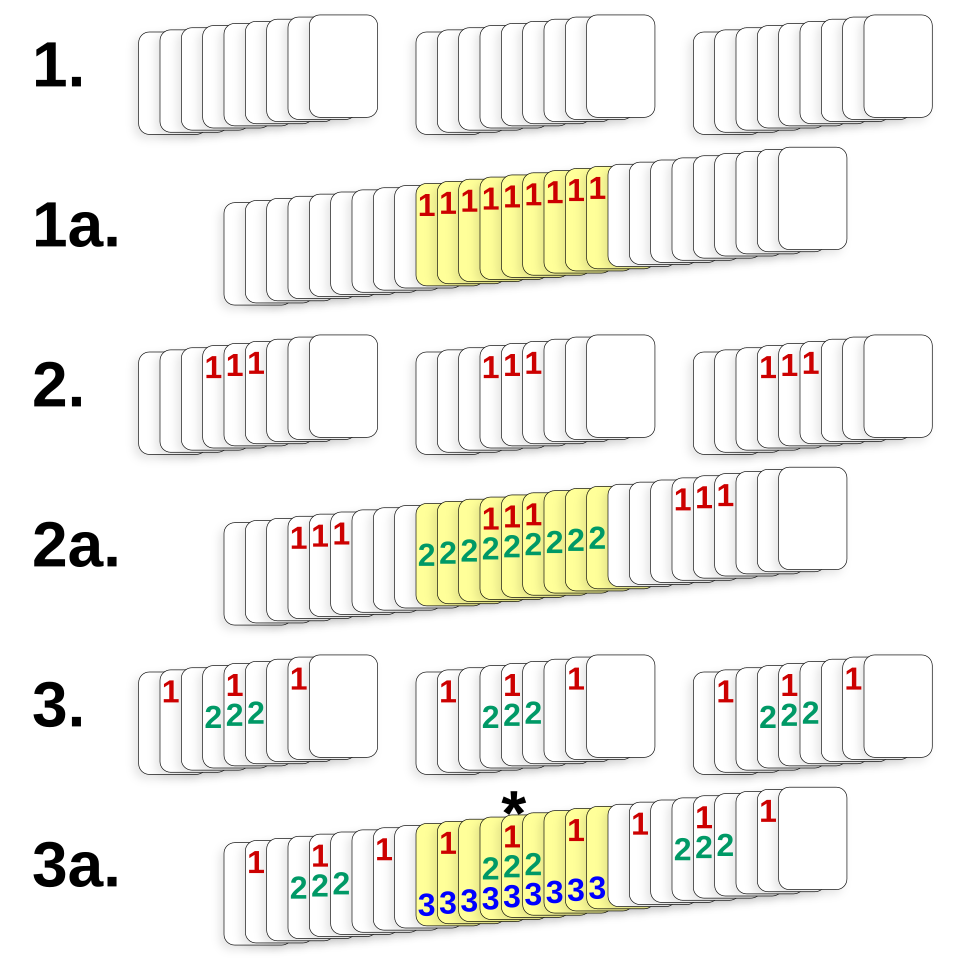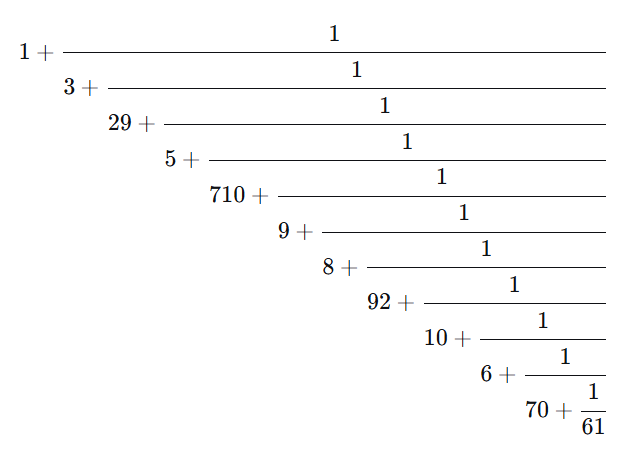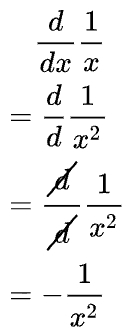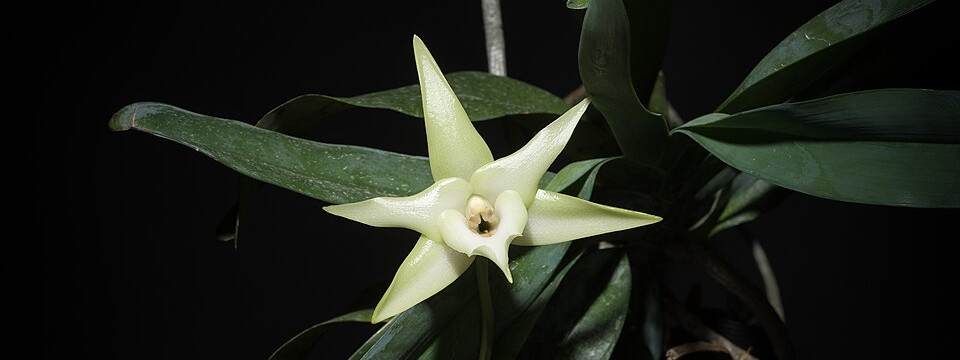Take a whole number, reverse the order of its digits, and subtract one from the other. The difference will always be evenly divisible by 9.
Does this remain true if we just scramble the digits of the first number, rather than reversing them?
Take a whole number, reverse the order of its digits, and subtract one from the other. The difference will always be evenly divisible by 9.
Does this remain true if we just scramble the digits of the first number, rather than reversing them?
A performer takes 21 cards from a standard deck and shuffles them. A player notes one at random. The performer deals out the cards into three columns of seven cards each. The player indicates the column that contains her card. Twice more the performer deals out the cards into three columns and the player identifies the one containing her card. At this point the performer identifies the card.
How is this done? The trick works automatically so long as, in taking up the cards, the performer always puts the chosen pile between the other two. After the first deal, the chosen card will fall in one of positions 8-14; after the second deal, it will reach position 10-12; and after the last deal, it will be the 11th card in the assembled packet (at which point the performer can reveal it however he pleases).
This illustration, by CMG Lee, demonstrates the same principle using 27 cards. At each step, the pile containing the chosen card is shaded yellow; the numbers correspond to the step numbers. In this case the chosen card always finds its way to the 14th position.

Here’s an animation with 21 cards, in which the chosen card, marked with an X, finds its way to the 11th position:


From reader Giorgos Kalogeropoulos:
“This continued fraction converges to a constant and this constant is the terms of the continued fraction concatenated.”
Constant: 1.329571098921067061816694798131449807696979288539287861665690554139889293716015345375844973593801890…
Terms: 1, 3, 29, 5, 710, 9, 8, 92, 10, 6, 70, 61, 81, 66, 94, 7, 98, 13, 14, 4, 980, 76, 96, 97, 928, 85, 39, 2, 87, 86, 16, 65, 690, 55, 41, 398, 89, 293, 71, 60, 15, 34, 53, 75, 84, 49, 73, 59, 380, 18, 90…
“This is the lexicographically earliest sequence starting with {1,3…}.”
(Thanks, Giorgos.)
Which is bigger, a jillion or a zillion? No one’s quite sure, though we all use these terms pretty readily. In 2016 Wayne State University linguistic anthropologist Stephen Chrisomalis cataloged the first appearance of 18 “indefinite hyperbolic numerals” — here they are in chronological order:
forty-leven
squillion
umpteen
steen
umpty
umpty-ump
umpty-steen
zillion
skillion
jillion
gillion
bazillion
umptillion
kazillion
gazillion
kajillion
gajillion
bajillion
The Oxford English Dictionary’s first cited usage of gajillion occurred in 1983, and they don’t yet have an entry for bajillion. So maybe that’s largest?
(Stephen Chrisomalis, “Umpteen Reflections on Indefinite Hyperbolic Numerals,” American Speech 91:1 [2016], 3-33, via Math Horizons.)
In 2012 I mentioned that Helen Fouché Gaines’ 1956 textbook Cryptanalysis: A Study of Ciphers and Their Solution ends with a cipher that’s never been solved. Reader Michel Esteban writes:
I think I found what kind of cipher Helen Fouché Gaines’ last challenge is.
In my opinion, it is a seriated Playfair of period 5 with two peculiarities:
– Zs are nulls in the ciphertext,
– Z is the omitted letter in the cipher square (instead of J).
If I am right, period 5 is the most likely reasonable period: we can observe no coincidences between upper and lower letters.
On the other hand, six reciprocal digrams appear: FD-DF, EC-CE, JN-NJ, JB-BJ, QL-LQ and GW-WG. These are almost certainly cipher counterparts of common reciprocal digrams (ES-SE, EN-NE, IT-TI, etc.).
I did not solve this cipher, because it is too short to use statistics. The only way to solve it is to use some metaheuristics (like Hill Climbing), but I have no computer!
I have no doubt you know someone that will be able to unveil the plaintext after having read these considerations.
Can someone help? I’ll add any updates here.
39,402,191,713 is prime, and replacing all three instances of 1 with any other (particular) digit produces another prime.
Noted in an old MIT Technology Review.


I used to like to hear him admire the beauty of a flower; it was a kind of gratitude to the flower itself, and a personal love for its delicate form and colour. I seem to remember him gently touching a flower he delighted in; it was the same simple admiration that a child might have.
— Francis Darwin, of his father